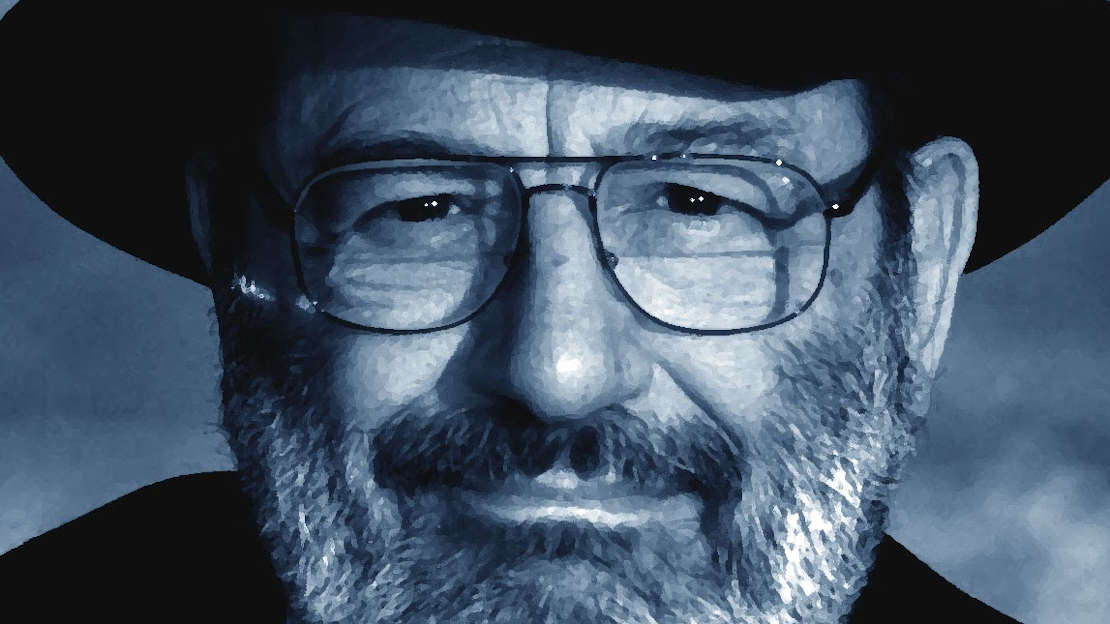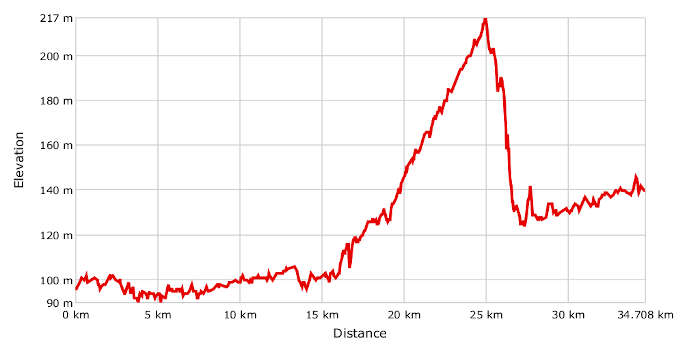
- Bike: strada
- Difficulty: **
- Distance: 35 km
- Altitude difference: 127 m
- Total ascent: 255 m
- Total descent: 211 m

Umberto Eco was an Italian author, literary critic, semiotic scholar and university professor. He was known all over the world, especially for his famous novel "The Name of the Rose" (1980), a historical thriller that blends semiotics, as well as biblical analysis, medieval studies and literary theory, within the narrative. The novel became an international best seller, translated in 47 languages, with 30 million copies sold, and also a 1986 film featuring Sean Connery that achieved a box-office record in Italy. In the novel, Umberto included a character from his native region, the Franciscan preacher and theologian Ubertino da Casale (Casale Monferrato 1259 – 1230).
Born on 5 January 1932 in Piedmont, in the town of Alessandria, as a child Umberto spent hours in his grandfather's small shop, where his interest in literature was kindled. During the most crucial years of World War II, he was evacuated with his family to Nizza Monferrato, a rural town where the young Umberto enjoyed the happiest, most joyous times of his childhood at the Oratorio Don Bosco, with many peers. After the war, back with his family in Alessandria, he obtained his high school diploma at the Liceo Classico “Giovanni Plana" and joined a Catholic organisation, of which he became the national leader. However, he left the role in 1954, during protests against the conservative politics of Pope Pius XII. While at university he embraced atheism and as he famously and ironically remarked: “You could say that Thomas Aquinas miraculously cured me of my faith.”
He spent his last years in Milan, dying there on 19 February 2016, aged 84.
Umberto is remembered both in Alessandria, his hometown, and in Nizza Monferrato, where he always kept in touch with his childhood friends. In this guide, we'd like to dedicate a route to this great writer, taking in the places of his childhood, from Alessandria to Nizza Monferrato.
Start in Alessandria, from the small Piazza Giuseppe Fanunza, near Via Marengo, where there is a car park. Go towards Via Montegrappa, where, at no. 7, the young Umberto lived with his family. Close by, on the right, you can see the Liceo Classico “Giovanni Plana“. A proposal to rename it after the celebrated author, who obtained his high school diploma here, has been under consideration for quite some time. The journey continues into town towards the Francesca Calvo civic library, on Piazza Vittorio Veneto. Notice, near to the entrance, the lighted monument commissioned by the town from the artist Marco Lodola, to honour its illustrious author.
The route continues through the town, as per the GPX. Leave the town by following the river Tanaro, along Via Vecchia Bagliani, towards the hamlet of Casalbagliano, along small, quiet, level roads. After only 3 km you reach another hamlet of Alessandria, Villa del Foro, an important location in terms of historic architecture. Villa del Foro dates back to ancient times. It was a major centre in the prehistoric and protostoric periods, as shown by many findings. Nearby, some graves have been discovered that date back to the Proto-Celtic peoples of Liguria and to Celtic civilisations from the Iron Age. It then became a Roman settlement, Forum Fulvii, that declined in the Middle Ages. The route continues along minor roads that the Eco family would have used to reach Monferrato. The next town is Oviglio, a small village that celebrates the famous "Sagra dei Pen" every year at the end of August. The festival is dedicated to Oviglio's distinctive delicacy, the "pen", which are similar to meatballs or oblong gnocchi, and officially recognised as DE.CO, designation of local origin. The recipe remains a secret to most; all that is known is that the mixture includes bread crumbs, minced lard and ham, grana cheese, eggs, parsley and garlic, cooked and served in a meat sauce. The castle and the Parish Church of Santi Felice e Agata are worth a visit.Continue to Incisa Scapaccino, province of Asti, which at the end of October celebrates the cardoon festival. The cycling route continues for about another 4 km, when it reaches Nizza Monferrato, where the Eco family retreated during World War II. You arrive in Viale Don Bosco, where Umberto's family lived at no. 4. He used to play with his friends on this street, when not at the Oratorio Don Bosco. Via Oratorio is also where the young Eco developed his first crush for a local girl and where, at the time of Don Giuseppe Celi, he made new friends and started dabbling in music. He learned to play the alto flugelhorn, or genis, and joined the town band.
The author always kept Nizza Monferrato in his heart. He returned there in 2010 when, under the shadow of the Campanòn (the bell tower), he was made honorary citizen of the town. Fragments of Umberto Eco's childhood in Nizza would later be captured, with slightly different names and details, in another of his most famous novels: "Foucault's Pendulum". The author entrusted his autobiographical childhood memories to the character Jacopo Belbo (whose name is taken from the stream that crosses Nizza). Among reminiscences we return to the present and the tour continues, reaching the town library at no. 4 Via Crova, named after Umberto Eco. The library contains Eco's works as well as other mementos of his life in the town. The tour ends at the nearby train station; you can take the train back or, as the route is short, just retrace your steps to Alessandria.
